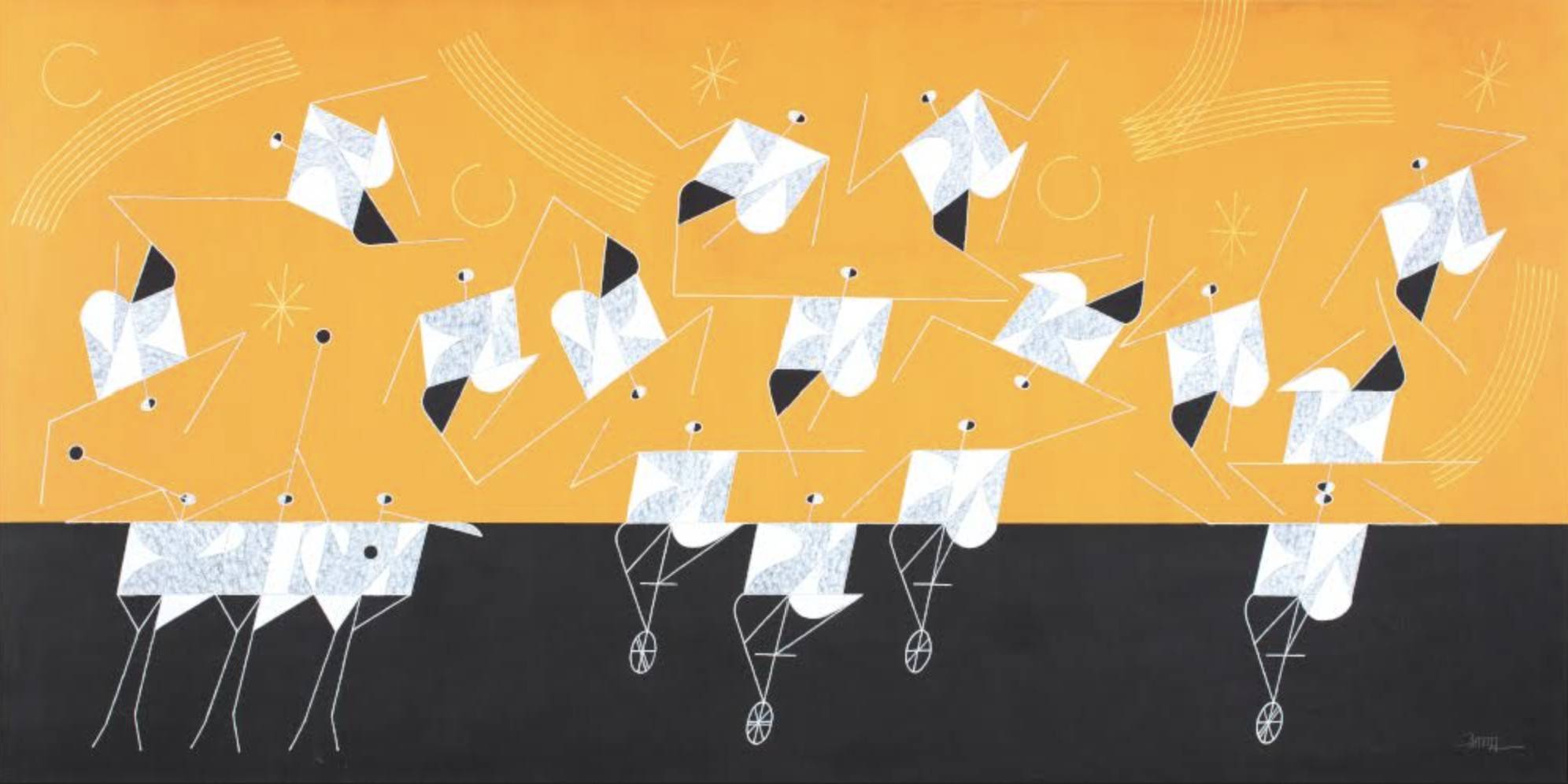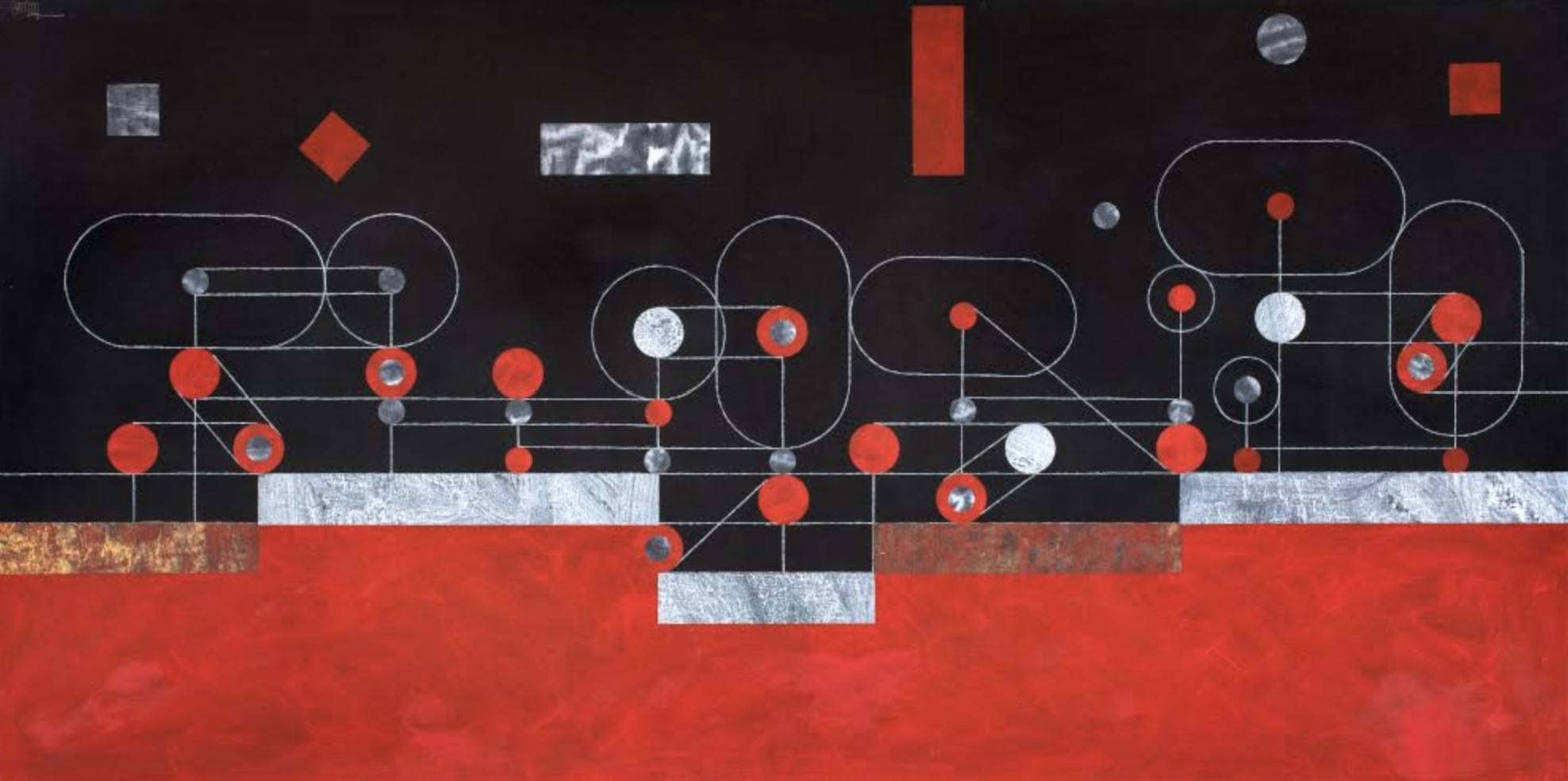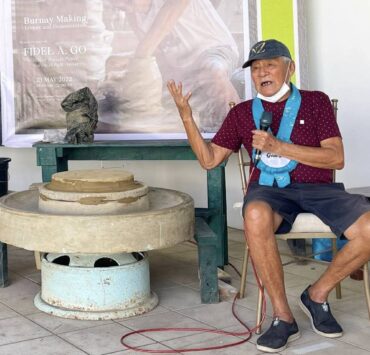Arturo Luz works on display this month

The works of the late National Artist Arturo Dimayuga Luz (1926-2021) are currently on exhibit at the Art Center, SM Megamall, in Mandaluyong, highlighting his unfading legacy in Philippine art and culture.
Curated by artist and art critic Cid Reyes, “Streamlined II: The National Artist Arturo Luz Exhibition” runs June 3 to June 16. The first iteration of the exhibit ran July 2 to July 13 at the same venue last year.
Featured in the current show are many of Luz’s works that form part of what Reyes describes as a “magnificent legacy of linear paintings.”

Luz was well-known for linear renditions of his varied subjects, a progressive move during the 1950s Philippines. It was the decade that saw the “emergence of first-rate talents” who became the progenitors of modernism in Philippine art. Apart from Luz, these included Vicente Manansala, Hernando Ocampo, and Fernando Zobel.
According to Luz in an earlier interview with Reyes, that decade was the golden age of Philippine art. This is due to the impact and influence of that important art movement in the country.

Reyes said Luz asserted and persevered in restraint by utilizing “the element of line as the driving force behind his compositions.
“That was the most significant challenge Mr. Luz faced—to make the line the supreme element of his art,” Reyes said.
Luz was a disciplined man who worked and painted with a definite schedule, favored wearing black, and was strict with himself.

As for his most significant achievement, Reyes said, it is “the fact that he changed the way Filipinos feel about art.” Creating “masterpieces that exemplify an ideal of sublime austerity in both expression and form, Luz demolished the old established order of taste and gave Filipinos an option to view art from a different perspective.”
He also “produced works that elevated Filipino aesthetic vision to new heights of sophisticated simplicity.”
Many of Luz’s works revolved around musicians, jugglers, and the great architecture of Asia which he linearized to form subjects that are not photographic representations, but creations of his own.

Patience of a spider
“He was able to create a vast body of work, each unique in its own right,” said Reyes, adding that the artist’s “peculiar gift” to Philippine art is his “perfect sense of a great composition.”
Luz also had the “patience of a spider” because of his diligence and persistence in creating a subject, a piece. This patience is best exhibited in his work on desert bushes executed in hundreds of thorns.
“It is the sheer diligence and industry that create such a subject based on the shape of a thorn,” said Reyes, adding that “I don’t know which artist will find delight in doing that.”

Luz was influenced first by the works of the Mexican artist Rufino Tamayo, and later by Swiss artist Paul Klee and American Frank Stella.
During his storied career as an artist and art administrator, he held many positions, including president of the Art Association of the Philippines in 1952, Design Center of the Philippines executive director from 1973 to 1987, director of the Metropolitan Museum of Manila from 1976 to 1986, director of the Museum of Philippine Art from 1977 to 1985, and owner of the Luz Gallery from 1960 to 2018.
By establishing the latter, Reyes said Luz “professionalized the art gallery as an institution and set a prestigious influence over generations of Filipino artists.”
Through it, “Luz inspired and developed a Filipino artistic community that nurtures impeccable designs,” he added.

















